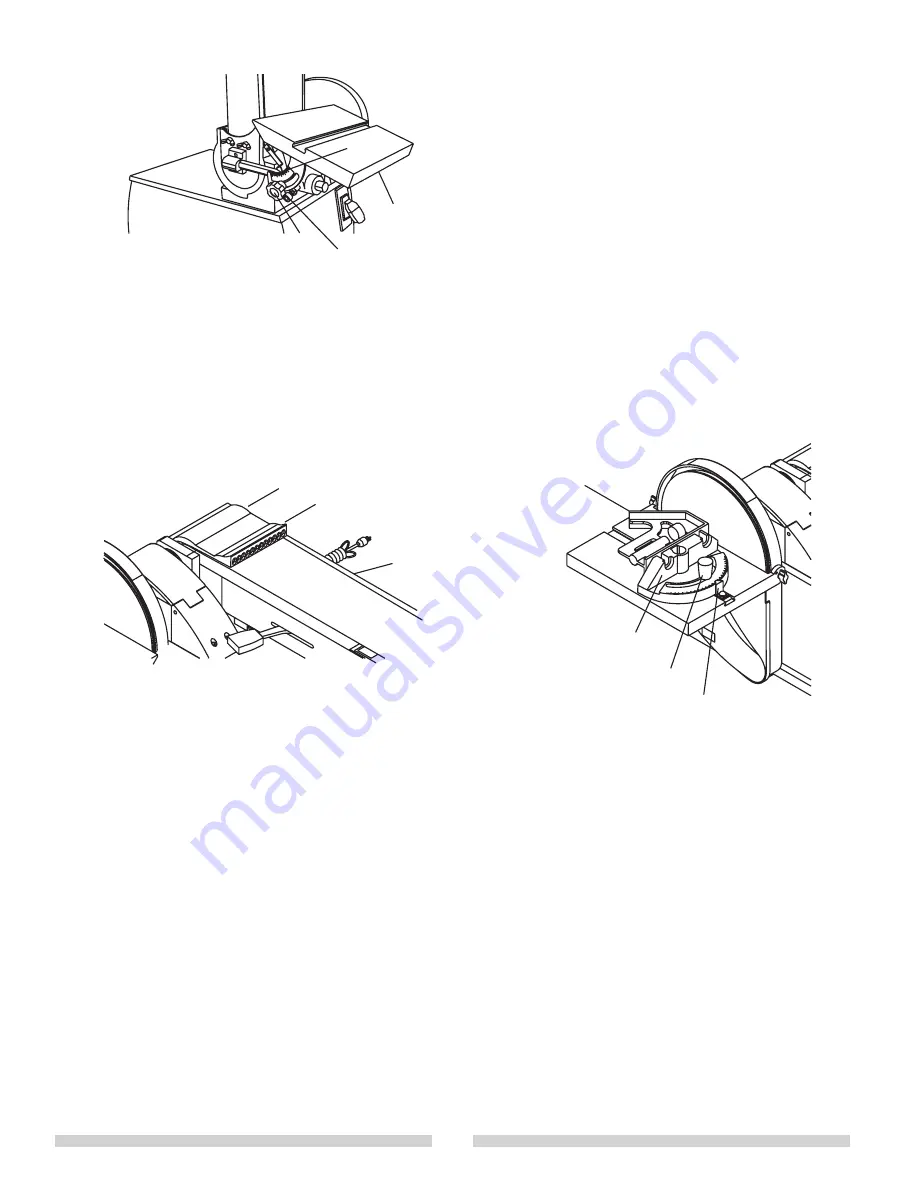
21
HORIZONTAL BELT SANDING WITH WORK
STOP
(Fig. K)
1. Remove table from belt assembly (1).
2. Tilt belt assembly from vertical to horizontal position
and secure in position.
3. Work stop (2) has been integrated into dust shroud (3).
4. Idler drum can be used as a contact drum to sand
surfaces.
ABRASIVE BELT SANDING
1. Finishing flat surfaces: Hold workplace firmly with both
hands; keep fingers away from abrasive belt. Use table
to position and secure work being sanded. Keep end
butted against table and move work evenly across
abrasive belt.
2. Finishing long pieces: Use belt in horizontal position
with work stop. Apply only enough pressure to allow
abrasive belt to remove material.
Use work stop to position and secure work being
sanded. Keep end butted against work stop and move
work evenly across abrasive belt. Use extra caution
when finishing very thin pieces.
3. Finishing curved edges: Finish outside curves on flat
portion or abrasive belt. Finish inside curves on idler
drum portion of abrasive belt.
4. Finishing end grain: It is more convenient to finish ends
of long workpieces with the abrasive belt in a vertical
position.
Position table on belt side of sander. Move work evenly
across abrasive belt. For accuracy, use mitre gauge.
Table may be tilted for beveled work.
ABRASIVE DISC SANDING
1. Abrasive disc sanding is well suited for finishing small
flat surfaces and convex edges.
2. Move workpiece across down side (left) of abrasive disc.
Hold workpiece firmly with both hands; keep fingers
away from abrasive disc.
3. Abrasive disc moves faster and removes more material
at outer edge.
4. For accuracy, use mitre gauge.
USING MITRE GAUGE
(Fig. L)
1. Use mitre gauge (1) for securing the work and holding
the proper angle while standing.
2. Use a combination square (4) to adjust mitre gauge
square to belt (disc). Pointer (2) should be at zero.
Loosen screw and reposition pointer if necessary.
3. After setting mitre gauge square to belt (disc), adjust to
desired angle by repositioning the mitre gauge scale
and locking it into place with knob (3).
REPLACING ABRASIVE BELT
(Fig. M)
1. Sanding belt should be replaced when worn, torn,
or glazed.
2. Remove table assembly (1) and support rod (2).
3. Loosen and remove wing screws and washers (3)
and cover (4)
4. Release belt tension by pushing tension lever up toward
idler drum. Slide old belt off the drive and idler drums.
NOTE: There may be an arrow on the inside of the belt.
The arrow should point in the direction of belt travel to
ensure that the splice in the belt will not come apart.
5. Slide new belt over the drive and idler drums; center
belt on drums.
6. Push tension lever down towards drive drum to tension
belt.
7. Check tracking. See “Adjusting Belt Tracking”, on page 21.
8. Assemble in reverse order.
Fig. J
2
4
1
3
Fig. K
1
2
3
Fig. L
1
3
2
4







































